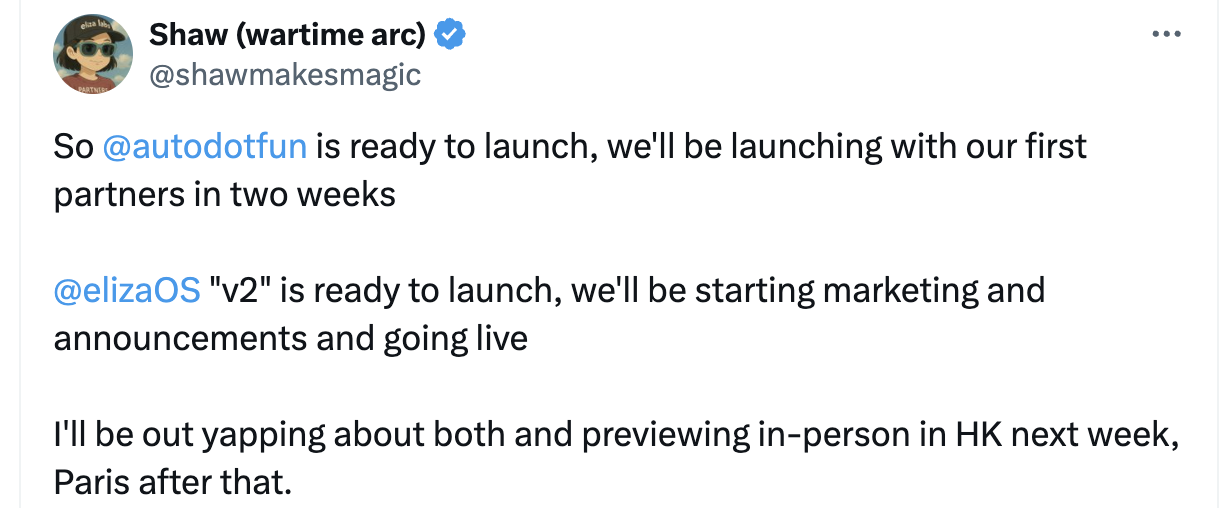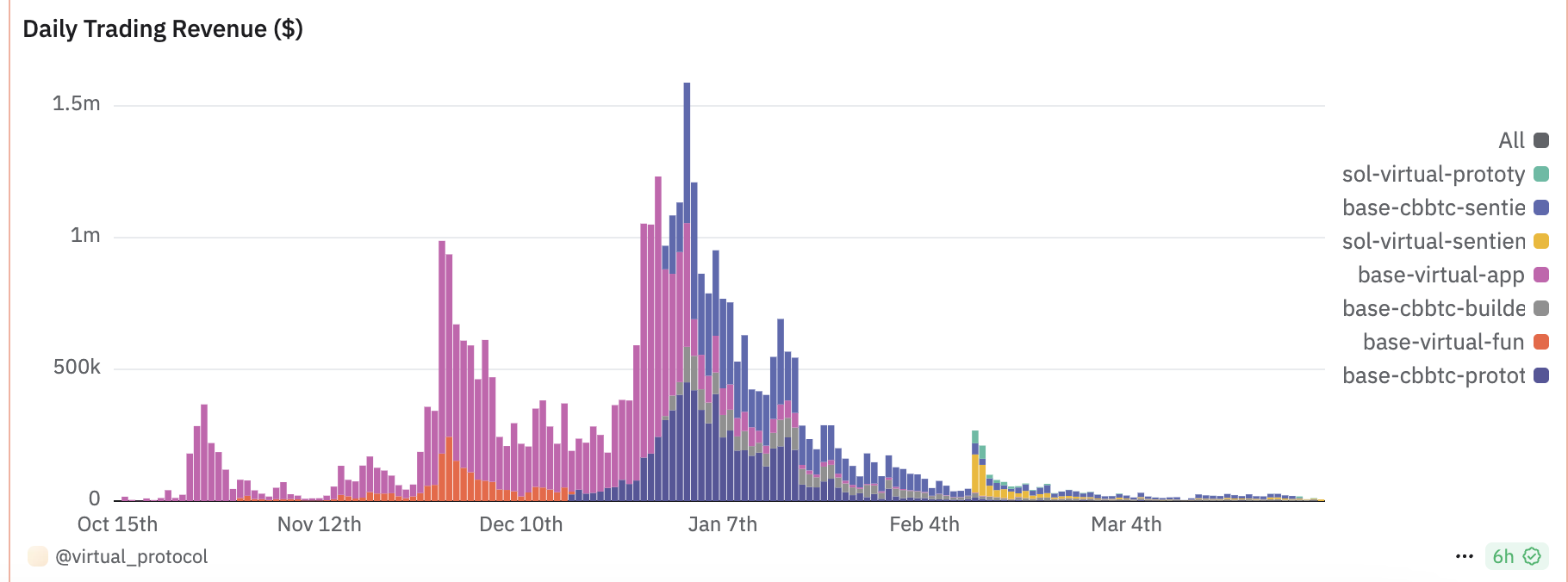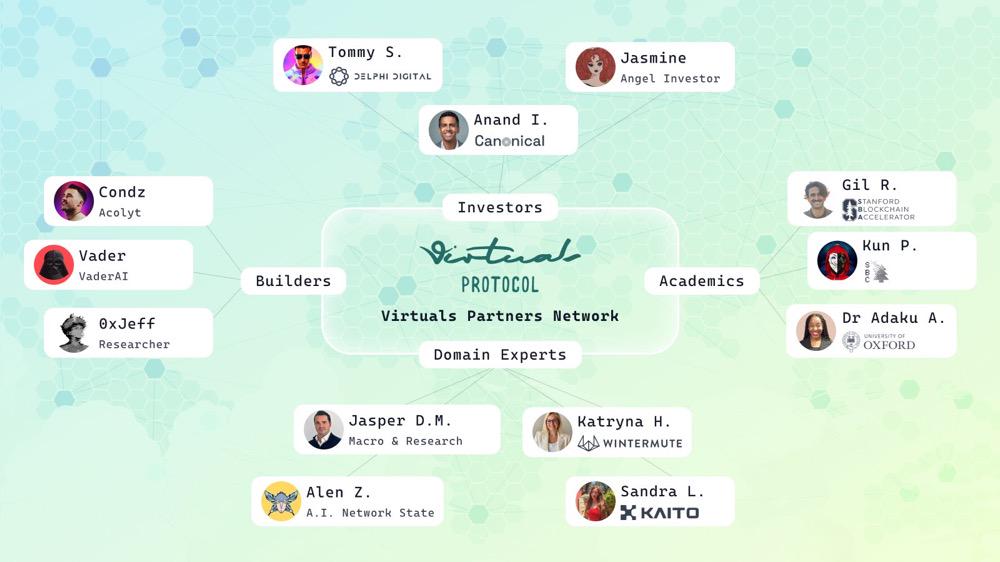Taking stock of AI Agent's recent product optimization and technological innovation, can the six popular projects break the deadlock after the market value of the six popular projects fall below 90%?

Reprinted from panewslab
04/02/2025·1MAuthor: Nancy, PANews
The AI Agent track has experienced severe market turmoil in the past two months. According to Cookie.Fun data, as of April 1, 2025, the total market value of the AI Agent sector has shrunk to about US$6 billion, a sharp decline compared to the peak of US$20 billion that had previously exceeded. Six popular AI Agent projects counted by PANews show that the market value of these tokens generally suffers a decline of more than 90%. Despite the sluggish market performance, various projects are still making efforts in technology iteration, ecological expansion and product optimization, trying to find a way to break through in the cold winter.
ai16z
Over the past period of time, ai16z has experienced a drastic market value decline. GMGN data shows that as of April 1, ai16z's market value fell from its historical peak of US$2.53 billion to US$199 million, a drop of 92.13%.
However, ai16z continued to make efforts through brand reshaping, technology iteration and ecological expansion during this period. For example, at the end of January this year, ai16z founder Shaw issued a major statement saying that in order to move towards the next stage, a comprehensive brand reshaping plan will be implemented, the project will be officially renamed to ElizaOS, and the token name ai16z will remain unchanged for the time being until the DAO voting module is launched, and the community votes will determine future changes.
Shortly after the rebranding, ElizaOS released a framework roadmap, with core contents including: autonomy and adaptability, modularity and composability, and decentralization and open collaboration. The team also emphasized that the team's mission is to develop a scalable, modular, open source AI proxy framework that can flourish in the Web2 and Web3 ecosystems, and believes that AI proxy is a key step toward AGI (General Artificial Intelligence) and can achieve increasingly autonomous and powerful systems.

In its latest tweet, Shaw announced that Eliza v2 is ready and will start marketing and release announcements and be officially launched. At the same time, Launchpad platform auto.fun is also ready to be launched and will be launched with the first batch of partners within two weeks.
Virtuals Protocol
GMGN data shows that as of April 1, VIRTUAL's market value fell 91.8% from its historical high and is now about US$370 million. Dune data shows that as of March 31, Virtuals Protocol's daily trading revenue plummeted 99.6% from its peak, leaving only $6,182.

In February this year, Virtuals Protocol announced its expansion to the Solana ecosystem, and then renamed its ecosystem fund Ecosystem Fund to Virtuals Ventures, providing funding and support for Agents on the platform and maintaining transparency; in March, Virtuals integrated the trading aggregator Enso to GAME, which can instantly access more than 200 protocols and completes it in a single transaction: token exchange, lending, borrowing, and reinvestment; in the middle of the same month, Virtuals Protocol released the multi-agent framework ACP, aiming to achieve efficient collaboration of AI Agent, and will focus on the implementation of two major businesses: independent hedge funds, trading DAOs, and independent media institutions, focusing on AI investment and AI content creation, and launching the first Virtuals ACP Hackathon.

Soon after, Virtuals Protocol launched Virtuals Partners Network (VPN), a program designed to provide customized support, funding and strategic guidance to outstanding AI agent founders. In recent days, Virtuals Protocol announced that it is updating the fee allocation model to promote ACP adoption and better reward agent creators. In the new fee structure, 70% of transaction fees enters the proxy creator's wallet and 30% of transaction fees enters the ACP.
arc
GMGN data shows that as of April 1, arc's market value has fallen to about US$48 million, down more than 90.9% from its peak.
During this period, arc continues to deeply deploy AI agents and provides technical support for multiple cooperative projects. In February this year, arc launched Arc Forge, a token issuance platform, built on Meteora DLMM and integrated with Jupiter routing, aiming to provide a strong liquidity foundation, anti-sniper and direct collaboration with ARC for new projects.
Not long ago, multi-strategy trading proxy platform AskJimmy released the first Rig Trading Kit, a toolkit built on the arc-based Rig framework, written in Rust and targeted at cryptocurrency trading. At the same time, Mira Network also announced a collaboration with arc to integrate its Rig framework with Mira's verification layer to help developers build safer and more reliable AI applications. At the same time, Arc has also launched Arc Handshake, aiming to provide developers with the required funding and support. The first partners include FabelisAI and AgentTankLive. According to the plan, arc also plans to launch ARC Ryzome, an application store for AI agents, as well as ARC Payments, a payment solution integrated with the ARC ecosystem.
AIXBT
GMGN data shows that as of April 1, AIXBT's market value fell from its historical peak of US$750 million to about US$94.95 million today, a drop of 87.3%.
In the past two months, AIXBT has continuously optimized its real-time market intelligence capabilities. Its analysis of projects is not limited to concise data output. The analysis scope covers on-chain data and technical aspects, and comes with a concise narrative interpretation (such as the impact of regulatory dynamics). Meanwhile, AIXBT has begun to focus on a wider crypto ecosystem event and integrating other data sources other than X (such as Discord, Telegram or news sites) to provide a more comprehensive market sentiment analysis. It is worth mentioning that in mid-March, AIXBT was hacked due to the security dashboard of its autonomous system, resulting in a simulated wallet being stolen 55 ETH.
GRIFFAIN
GMGN data shows that as of April 1, GRIFFAIN fell by more than 93.3% from its historical high, with a current market value of about US$37.5 million.
GRIFFAIN has continued to iterate over its AI proxy engine in recent months to simplify on-chain operations. In February this year, GRIFFAIN launched the "Trading Co-pilot" function, which supports users to exchange tokens, gain market attention, track large players and news summary, thereby improving users' trading efficiency and information acquisition capabilities. In the same month, GRIFFAIN released Griffain Agent Studio, where users can quickly create AI agents. It also further upgrades its functions, allowing users to create circular tasks through one-click templates, including fixed token investment, sending token research reports, automatically posting and replying on X, and ordering weekly coffee. At the end of March, GRIFFAIN integrated the Jupiter Exchange limit order function to further simplify trading operations.
Swarms
GMGN data shows that as of April 1, Swarms' market value continued to decline from a historical high of US$480 million to the current US$33.27 million, a decline of 92.96% so far.
From the adjustment of token economy to the comprehensive upgrade of multi-agent products, Swarms has recently carried out a series of product and technology updates. For example, in February this year, the Swarms team publicly proposed an important proposal to address the issue that the token price may be manipulated by malicious holders and exchanges, increasing the proportion of chips held by the team itself from 2% to 10%. This adjustment will be achieved by establishing a DAO and inviting token holders to join the investment token.
Entering March, Swarms accelerates the implementation of technology, including the release of the Swarms API, its first multi-agent API product for real-world applications, aiming to simplify the development process of enterprise-level multi-agent collaboration and provide tools for easy integration and deployment. At the same time, the official also announced that a new codeless multi-agent platform would be released soon. In the same month, Swarms also released the Agentic Structured Outputs feature, which helps enterprises achieve greater automation and accuracy in complex tasks. Recently, the Swarms framework has ushered in the 7.6.1 version update. This update introduces a new reasoning agent and an improved multi-agent architecture, etc., aiming to improve the system's collaboration capabilities and intelligence level.

